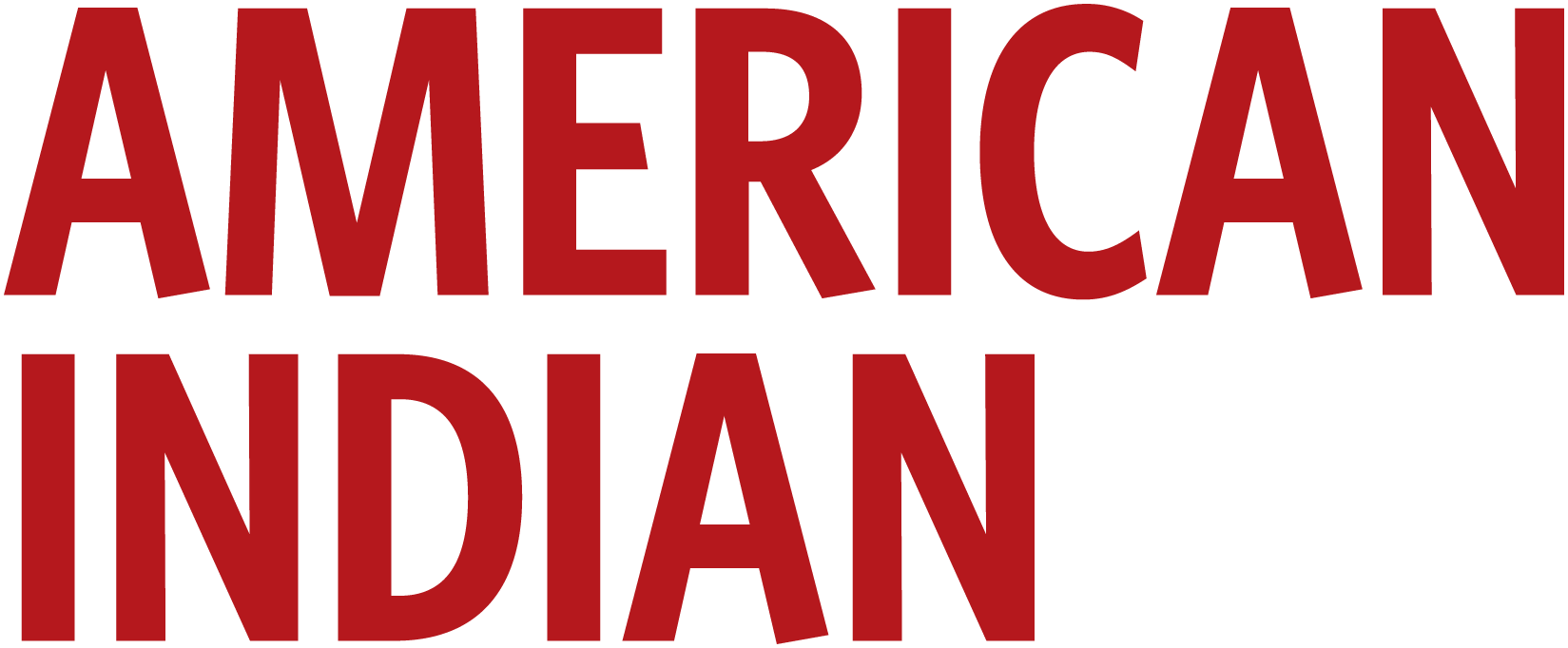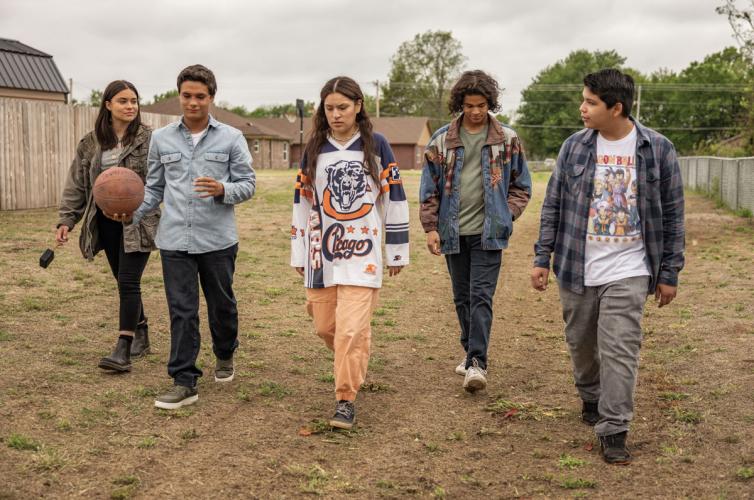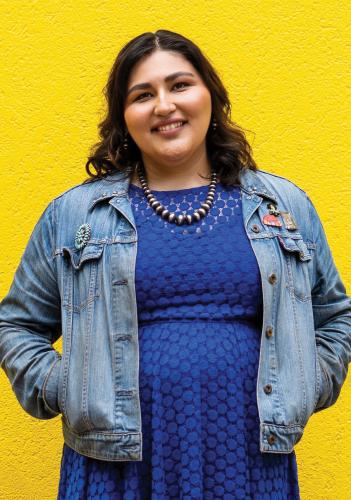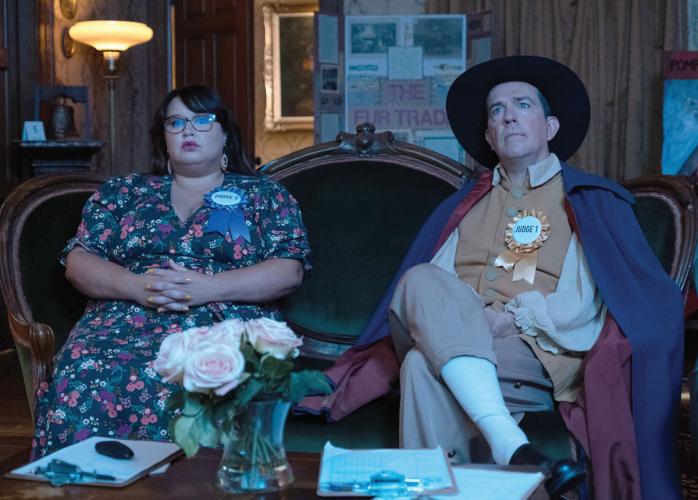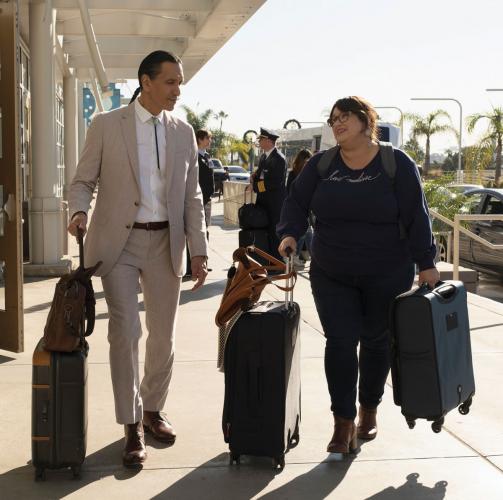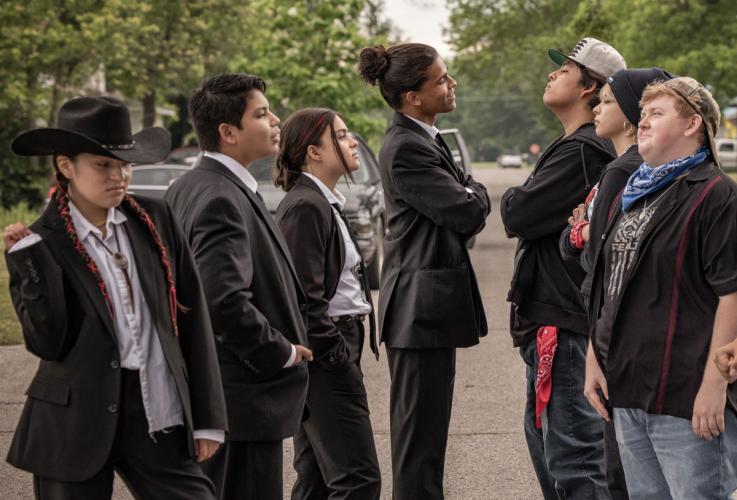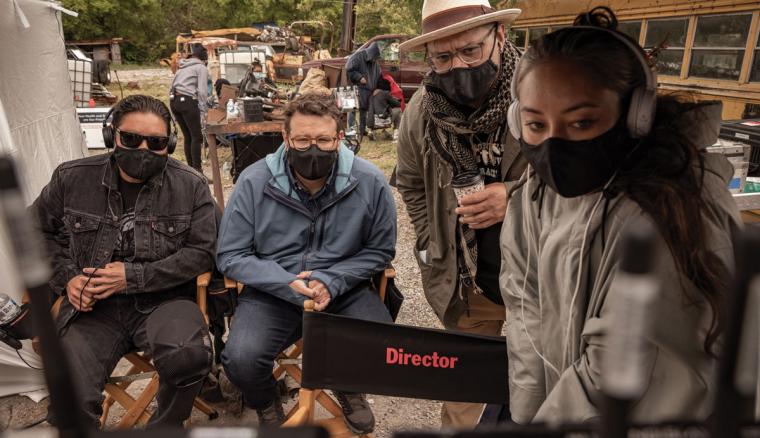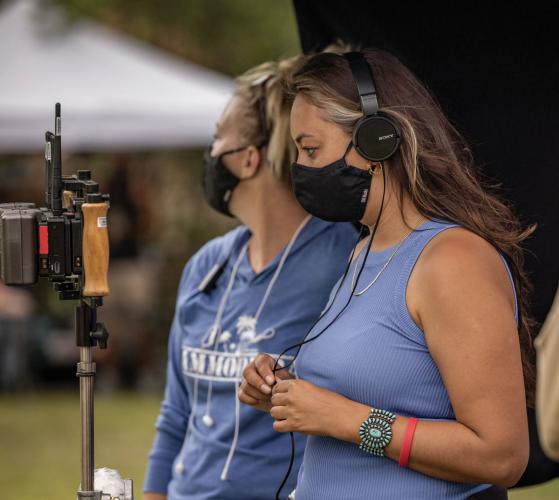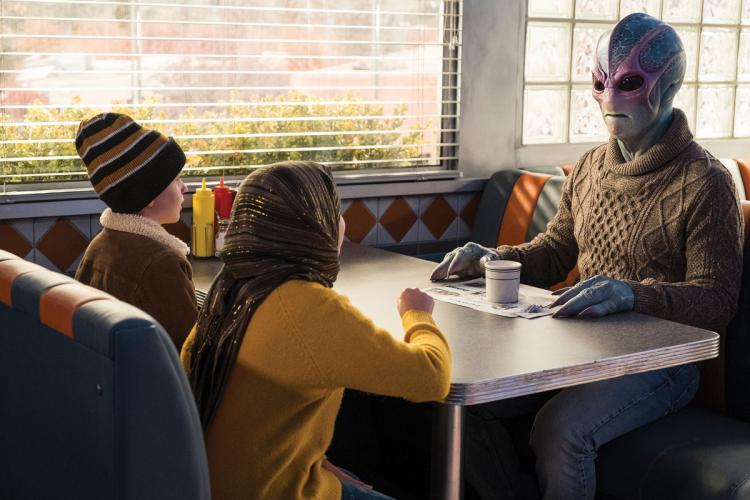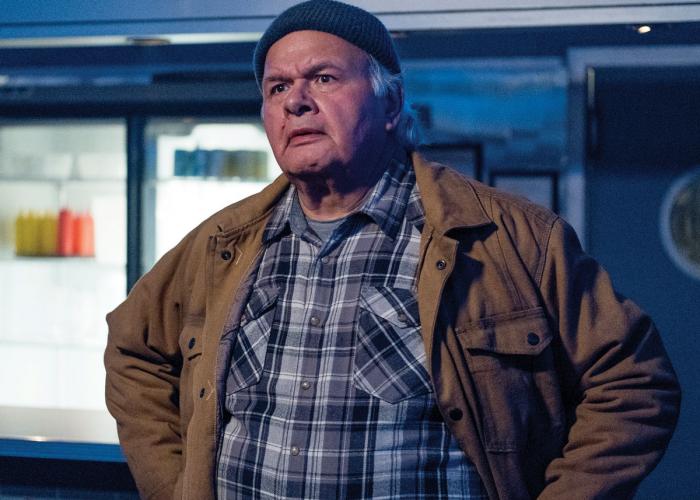If you can see it, you can be it. This is what a new generation of Native directors, producers and writers are proving—that after years of stereotypical portrayals in film and television, showing culturally accurate stories and characters about contemporary tribal communities is not only possible, but profitable.
“It took more than 20 years to convince industry gatekeepers that there’s promise and value in Indigenous stories for film and TV,” says Bird Runningwater (Cheyenne/Mescalero Apache), who directed Sundance Films Native Lab for two decades. After the protests against an oil pipeline being run next to the Standing Rock Indian Reservation in the Dakotas, he says, “we began to see an uptick in the industry inquiring about Native talent, stories, collaborators.”
In 2020 and 2021, three Native-themed TV comedies—“Reservation Dogs,” “Rutherford Falls” and “Resident Alien”—sparked national acclaim from audiences and critics alike, earning dozens of nominations and awards. Behind the scenes are determined television directors, producers, writers and actors crafting culturally rich stories that are changing narratives and stereotypes about Indigenous peoples and cultures.
The mix of talented writers on these shows “makes magical writing, and a lot of it is based on their relationships,” says Runningwater. “Many of them have known each other for a decade through Sundance circles where we cultivate and support Native storytellers.”
But change hasn’t come easily. “It’s hard to turn something as monolithic as colonial cruise ships in the industry. Big things are hard to turn around, but the work of this generation has worn away at the foundation,” says Michael Greyeyes, a Muskeg Lake Cree Nation actor, director, scholar and choreographer whom Variety honored for 2021 Best TV Performance in “Rutherford Falls.”
Straight from the Rez
Taika Waititi, a Maori from New Zealand, directed movies such as “Thor: Ragnarok,” “Two Cars, One Night,” “Boy,” as well as the television shows “What We Do in Shadows” and The Mandalorian. He won an Oscar for another film, “Jojo Rabbit,” as well as a BAFTA Award, a Grammy and two Emmy nominations for his work.
“We come from the poorest places on earth, but the way that you deal with being poor is through humor,” Waititi says.
That’s common in Native communities but humor has been absent from depictions of Indian people until now, says filmmaker, director, and producer Sterlin Harjo. He has made several films, “MEKKO,” “Goodnight Irene,” “Four Sheets to the Wind,” “Barking Water” and just debuted his new documentary, “Love and Fury,” about Native artists.
“It’s not up to Hollywood to change Native representation in the media,” he says. “They have failed at it for decades. It’s up to us—artists, filmmakers, storytellers and activists.”
One evening over drinks, Waititi and Harjo dreamed up the concept for a reservation-based comedy. Harjo sent a pitch for “Reservation Dogs” overnight and hoped for the best. Waititi—who has a multiyear, first-look deal with FX—sold the comedy within a week and FX greenlit eight episodes for the first season.
“I think ‘Reservation Dogs’ is a really close portrayal of what being Native is like,” he told Emmy magazine. “And people think it’s surreal and fantastic. It’s a comedy and all these things, but it’s also just life. It shouldn’t be that radical to show teenagers in a small town wanting to get out. But because you’ve never seen Native kids do this, it is.”
Filmed in Okmulgee, Oklahoma, over two months in the summer of 2021, “Reservation Dogs” is based on Harjo’s life growing up in the Muscogee Creek and Seminole Nation communities. The series shadows four teenagers mourning the death of their friend Daniel while committing petty crimes to save money to run away to California.
“Reservation Dogs” premiered on FX on August 9, 2021. It has since been named No. 1 Best Show of 2021 by Entertainment Weekly, Best Breakout Series–Short Form by Gotham Independent Film Awards, New York Times’s Best TV Shows of 2021, Critics Choice Awards nominee for Best Comedy Series and has been honored as one of the 10 Outstanding TV shows of 2021 by the American Film Institute. The Golden Globe Awards just nominated it for the category of Best Television Series of 2021.
Showrunners oversee all aspects of production working with creators, producers, networks and writers. When Harjo became the showrunner of “Reservation Dogs,” he intentionally hired an all-Native staff of writers, directors and lead actors. Among them is director Sydney Freeland (Navajo), whose credits include four independent films and 22 episodes of television shows, “Grey’s Anatomy,” “The Walking Dead,” “Rutherford Falls,” “Star Trek,” “Chambers,” “Nancy Drew, Her Story” and others. He also hired two filmmakers who had never directed television before, Tazbah Chavez and Blackhorse Lowe.
“It’s what Taika did for me,” Harjo told Tribal Business Journal. “Because we were raised right, we know how communities work. You lift your people up and bring them along. The crew and every department for ‘Reservation Dogs’ had multiple Native people working in it. It’s a community and you have to treat it like that.”
Rutherford Falls
Sierra Teller Ornelas, the first Native showrunner on a major series, “Rutherford Falls,” says that sense of community makes it work. She is inspired by her mother, Barbara, a master Navajo tapestry weaver, and a long line of “aunties,” grandmas and other mentors who raised her to believe she could do anything.
From 2005 to 2010, after college graduation, she worked at the National Museum of the American Indian lining up films to show in its two locations in Washington, D.C., and New York. Now a veteran television writer and producer, Teller Ornelas’s credits include “Superstore,” “Splitting Up Together,” “Happy Endings” and “Brooklyn 99.”
When producer Michael Schur and actor Ed Helms approached Teller Ornelas with an idea for a new comedy about a small town bordering a reservation that was embroiled in controversy over moving a historic statue, she pitched her ideas and became co-creator and showrunner for “Rutherford Falls.” Teller Ornelas and Schur agreed that half the writers for the show should be Native, and she was able to hire a “dream team” of five Indigenous writers and comics—Tazbah Chavez, Tai Leclaire, Jana Schmieding and Bobby Wilson—who joined Teller Ornelas, Schur and Helms in the writers’ room.
“We’d talk about culture, capitalism, casinos, art, repatriation, treaties and gave complexity to the characters. Often there’s only one Native character on a show who has to represent all tribes, but we were the first Native sit-com and had a wealth of tribal diversity. There’s so much trust, laughter and teamwork among us, it’s the best of times,” she says.
“The creative process takes a lot out of you, but it feeds you at the same time. We want people to better understand us, and comedy is a great way to tell those stories. We’re showing people that Native storytellers can write everything.”
Since its premier on Peacock on April 22, 2021, “Rutherford Falls” has won the 2021 ReFrame Stamp Award and six Gotham, Hollywood Critics and Online and Film and Television Association nominations for Best Comedy, Best Actor, Best Direction and Outstanding Actor Michael Greyeyes.
Expanding the Film and TV Industry
Many other Indigenous-produced shows and films have premiered or are just on the horizon. For example, “Resident Alien,” which premiered January 27, 2021, is about an extra-terrestrial who crashes in a Colorado mountain town near the Ute Reservation. It has five nominations for coveted awards and has won the Hollywood Critics Association Awards for Best Cable Comedy Series in 2021.
Yet many in the entertainment industry are saying that many more Native voices need to be part of the industry. In October 2020, the Writers Guild of America’s Native American and Indigenous Writers Committee, co-chaired by Tazbah Chavez and Anthony Florez, sent an open letter to Hollywood about the lack of representation and pervasive misrepresentation of Native people in the industry. They cited a study by IllumiNative, a nonprofit organization dedicated to increasing the Native presence in media, that indicates Native representation in film and entertainment is nearly invisible, making up 0.04 percent of all media, with even fewer writers and directors. The Inclusion Initiative found that across the 1,300 top films from 2007 to 2019, less than 1 percent of speaking characters were American Indian or Alaska Native.
Tazbah Chavez, a Nuumu and Diné writer and director from the Bishop Paiute Reservation in the Sierra Nevada, was a performance poet and business executive who interned at Sundance Films while at University of California, Los Angeles. Her first film, “Your Name Isn’t English,” was executive produced by Taika Waititi through AT&T Hello Lab. She broke into the industry three years ago writing for “Resident Alien.”
“Part of what’s happening,” she says, “is for first time we have Indigenous showrunners, so that means we have Native people in positions of power—in hiring, casting, decision-making and production. This floodgate happened with ‘Rutherford Falls’ and ‘Rez Dogs’ because we have Native showrunners making choices to hire Indigenous writers, to hire Native directors, to give first-time opportunities to peers.”
Native creatives have doubled their numbers in the last few years, but Chavez noted there are still major network programs depicting Native characters with no Native writers, and it shows.
“On my first TV writing job, I was the only Native person on a staff of 10,” she says. “With ‘Rutherford Falls,’ I was one of five Native writers, now we have six. And I’m one of 11 writers now on ‘Rez Dogs.’ Natives are going to keep hiring Native people, but we need to step it up with more non-Natives in the industry hiring us. The opportunities for original storytelling are limitless.”
Greyeyes, who is also a professor of theater and stage, said on a recent IllumiNative panel on Instagram, “With Indigenous creatives populating their stories with experiential information, what you are allowed to see are interactions we recognize in our communities, sophisticated cultural dynamics we grew up with. That’s impossible to write unless you experience it. When you have non-Native writers stepping in and writing stories, they don’t really understand or have experiential information to write that narrative.”
For director Sydney Freeland, “Drunktown’s Finest” was emblematic of daily life growing up in Gallup, New Mexico, surrounded by racism, alcoholism and violence. The 2014 film is about an adopted Christian girl, a rebellious father-to-be and a promiscuous transsexual striving to escape the hardships of life on an Indian reservation. It earned Freeland multiple Best Film and Best Director awards and spurred her determination to make a career of it.
“Growing up I never imaged myself with a career in film and television,” she says. “I’m a Navajo trans kid from Gallup and that was never an option presented. I grew up with my dad in kind of a bubble away from alcohol with a lot of artists in my family. But there were limited options, military, nurse, teacher. Filmmaker wasn’t one of them.”
It was a computer animation class at Arizona State University that sparked her in interest in storytelling, photography and film. “It was mind-blowing that I could make up characters, tell a story and do whatever I wanted,” she recalls. “After that semester, I knew what I wanted to do. I moved to San Francisco for film school and threw myself headlong into the filmmaking process. I learned the ABCs in film school, but it was Sundance that taught me how to turn those stories into pages with structure.”
From there, “I threw myself into a variety of productions, learning as much as I could behind the camera, in editing and digital imaging. On weekends, I made short films, commercials and continued to write scripts. When I met Bird Runningwater, I had submitted a long script to the Sundance Native Lab and he guided me through the process of what it takes to make films. Sundance gave me an elevated platform for my work, and things took off.”
Freeland says there’s a bit of “imposter syndrome” as you move up the ranks in skill sets and experience. “I had these moments where I thought I’m not supposed to be here, I’m in over my head, but the mentality ingrained by my heritage kept me pushing and striving to succeed. You put one foot in front of the other, take your lumps, and learn to do better for the next production. I try to share what I learned with other directors.”
With more and more audiences drawn to the richness and authenticity of Indigenous narratives, demands and opportunities for Native content are growing. “We’re exercising Indigenous narrative sovereignty,” Greyeyes said on the Instagram panel. “Native artists have undeniable talent and creativity, and cut their teeth making stories we hold dear. They’ve earned the right to run shows and make brilliant work. The door’s been shut a long time and we’ve been pressing on it until the hinges finally broke. The important thing about Taika, Sierra and Sterlin is when they tore the hinges off the door, they helped others follow. That’s why we’re at this intersection of Indigenous excellence, finally receiving acclaim for work we’ve always been doing.”
For captains in the industry, Greyeyes has some advice: “Get out of the way. We’re going all gas, no brakes, taking our stories back. We come from survivors and were raised by fighters. We’re going to do what we have to do to exercise Indigenous narrative sovereignty and take our stories back.”
Editor's Note: The writer, Valerie Taliman, is the mother of television writer Tazbah Chavez, who is mentioned in this story.
